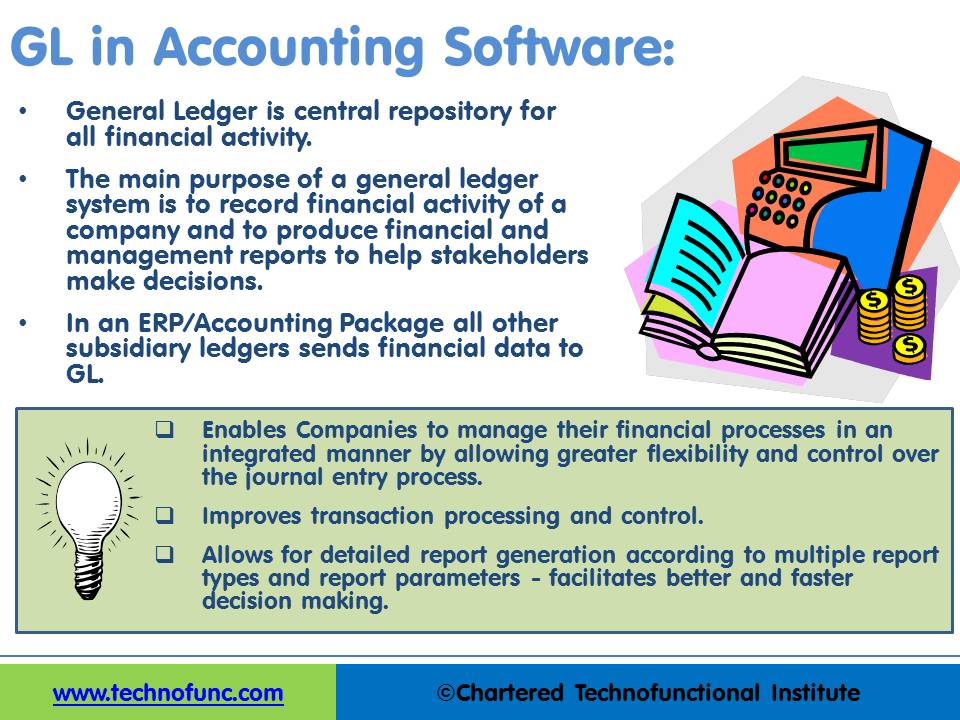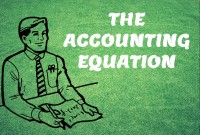- Home
- Business Processes
- Industry Knowledge
- Aerospace Industry
- Automotive Industry
- Banking Domain
- BFSI Industry
- Consumer/ FMCG Industry
- Chemicals Industry
- Engineering & Construction
- Energy Industry
- Education Domain
- Finance Domain
- Hospitality Domain
- Healthcare Industry
- Insurance Domain
- Retail Industry
- Travel and Tourism Domain
- Telecom Industry
- Leadership Skills
- eLearning
- Home
- Business Processes
- General Ledger (Record to Report)
- Benefits of Automated GLs
Benefits of Automated GLs
The general ledger is the central repository of all accounting information in an automated accounting world. Summarized data from various sub-ledgers are posted to GL that eventually helps in the creation of financial reports. Read more to understand the role and benefits of an effective general ledger system in automated accounting systems and ERPs.
Automated General Ledgers
In order for people inside and outside an organization to use financial data, transaction information is organized by the account in ledgers. A general ledger is the main accounting record of a business. Originally a paper document, a ledger is now more likely to be an electronic document containing summarized financial data and balances for all the accounts of an organization.
In automated systems like ERPs, General Ledger is the central repository for all transactions that get recorded in various supplemental books, which are known as modules or sub-ledgers. Examples of supplemental books in traditional accounting are sales books for sales, purchase books for purchases, cash and bank book for cash related transactions and general journals book to capture adjustment entries. In “Automated Accounting Packages” these supplemental transactions are recorded in modules like Accounts Payables, Accounts Receivables, Purchase, or Inventory.
The respective journals may contain additional information other than the accounting information and all activities or transactions get recorded in various Sub‐Ledgers(Especially in ERPs) irrespective of whether they have a financial impact or not. An example is the creation of PO’s in the purchasing modules irrespective of them having no financial impact. However, the same PO can later be converted into a Payables Invoice automatically, which has an accounting impact.
These subsidiary ledgers (also known as modules), send financial data to General Ledger. Data from different modules can be imported automatically using integrations with Sub Ledgers. General Ledger validates the financial data and updates the balances to the respective accounts.

Benefits of Automated General Ledger:
In Accounting Packages or in ERP’s like Oracle and SAP, “General Ledger” is the central repository of all accounting information. Automated General Ledgers can be a comprehensive financial management solution that can provide highly automated financial processing, effective management control, and real-time visibility to financial results. It can provide internal controls that an organization needs to meet financial compliance. Some major benefits of an automated general ledger system are explained below:
Flexible Accounting Model:
In today’s complex, global, and regulated environment, finance organizations face challenges in trying to comply with local regulations and multiple reporting requirements. The Automated General Ledger system allows companies to meet these challenges in a streamlined and automated way. You can define multiple ledgers based on your needs and they can be used to cater to statutory, corporate, regulatory, and management reporting needs with the same underlying financial data. With a single entry source, multiple accounting representations can be simultaneously maintained for a single transaction. For example, a single journal entered in the main, record-keeping ledger can be automatically represented in multiple ledgers (local and global consolidated) even if each ledger uses a different chart of accounts, calendar, currency, and accounting principles.
Multi-Currency Functionality:
Automated General Ledgers provides multi-currency functionalities that can help satisfy complicated global financial requirements. These features can perform currency conversion, revaluation, re-measurement, and translation in accordance with local and international accounting standards for a large number of currencies.
Transaction Processing & Control:
The general ledger is the foundation of any accounting system; it improves transaction processing and control. It collects transaction details from other applications allowing the preparation of key financial reports. Control on Journal Entries creates an auditable record of a business's complete financial history. Automated General Ledger can provide a variety of journal processing options to help organizations to capture transactions with efficiency and control. The entry of journals can be automated using journal templates or can be uploaded using a spreadsheet.
Accuracy and Real-Time:
A good general ledger software application will provide management with accurate, up-to-date information in order to make short and long term business decisions. It also has inbuilt controls and processes necessary, to ensure that the correct information is reported. Income statements, balance sheets, and statements of cash flow are standard reports needed by management to judge business progress and these reports can be built using the trial balance created in General Ledger.
Common Chart of Accounts (COA):
Organizations can enforce a common Chart of Accounts structure across different processes, modules, and entities, enabling them to manage their financial processes in an integrated manner by allowing greater flexibility and control over the journal entry process. Accounts in the chart of accounts can be secured to prevent unauthorized access and viewing of sensitive financial data. They also support account hierarchies to group accounting data.
Accuracy of Financial Statements:
The main purpose of a general ledger system is to record the financial activity of a company and to produce financial and management reports to help stakeholders make decisions. Every corporation needs to prepare financial statements like Balance Sheet and Profit and Loss Account. General Ledger provides detailed account balances for the formation of this financial reporting. Stakeholders can make effective decisions only when the underlying financial data is available timely on-demand and correct.
Reporting Flexibility:
Using General Ledger Software allows for detailed report generation according to multiple report types and report parameters - facilitates better and faster decision making. The ability to access financial records by departments, cost centers, or other accounting divisions, provides visibility to understand business performance across the organization. It enables tracking critical information on the company's financial position and supplements it with various statutory and management reporting options.
Related Links
You May Also Like
-
Multi Currency - Functional & Foriegn
Currency is the generally accepted form of money that is issued by a government and circulated within an economy. Accountants use different terms in the context of currency such as functional currency, accounting currency, foreign currency, and transactional currency. Are they the same or different and why we have so many terms? Read this article to learn currency concepts.
-
In this article we will help you understand the double-entry accounting system and state the accounting equation and define each element of the equation. Then we will describe and illustrate how business transactions can be recorded in terms of the resulting change in the elements of the accounting equation.
-
An allocation is a process of shifting overhead costs to cost objects, using a rational basis of allotment. Understand what is the meaning of allocation in the accounting context and how defining mass allocations simplifies the process of allocating overheads to various accounting segments. Explore types of allocations and see some practical examples of mass allocations in real business situations.
-
GL - Unearned / Deferred Revenue
Unearned revenue is a liability to the entity until the revenue is earned. Learn the concept of unearned revenue, also known as deferred revenue. Gain an understanding of business scenarios in which organizations need to park their receipts as unearned. Look at some real-life examples and understand the accounting treatment for unearned revenue. Finally, look at how the concept is treated in the ERPs or automated systems.
-
Period End Accruals, Receipt Accruals, Paid Time-Off Accruals, AP Accruals, Revenue Based Cost Accruals, Perpetual Accruals, Inventory Accruals, Accruals Write Off, PO Receipt Accrual, Cost Accrual, etc. are some of the most complex and generally misconstrued terms in the context of general ledger accounting. In this article, we will explore what is the concept of accrual and how it impacts general ledger accounting.
-
Team-Based Organizational Structure
Team-based structure is a relatively new structure that opposes the traditional hierarchical structure and it slowly gaining acceptance in the corporate world. In such a structure, employees come together as team in order to fulfill their tasks that serve a common goal.
-
There are five types of core accounts to capture any accounting transaction. Apart from these fundamental accounts, some other special-purpose accounts are used to ensure the integrity of financial transactions. Some examples of such accounts are clearing accounts, suspense accounts, contra accounts, and intercompany accounts. Understand the importance and usage of these accounts.
-
Hierarchical Organization Structures
Hierarchical structure is typical for larger businesses and organizations. It relies on having different levels of authority with a chain of command connecting multiple management levels within the organization. The decision-making process is typically formal and flows from the top down.
-
An organizational design is the process by which a company defines and manages elements of structure so that an organization can control the activities necessary to achieve its goals. Good organizational structure and design helps improve communication, increase productivity, and inspire innovation. Organizational structure is the formal system of task and activity relationships to clearly define how people coordinate their actions and use resources to achieve organizational goals.
-
In every journal entry that is recorded, the debits and credits must be equal to ensure that the accounting equation is matched. In this article, we will focus on how to analyze and recorded transactional accounting information by applying the rule of credit and debit. We will also focus on some efficient methods of recording and analyzing transactions.
Explore Our Free Training Articles or
Sign Up to Start With Our eLearning Courses

About Us
Learning
© 2023 TechnoFunc, All Rights Reserved










